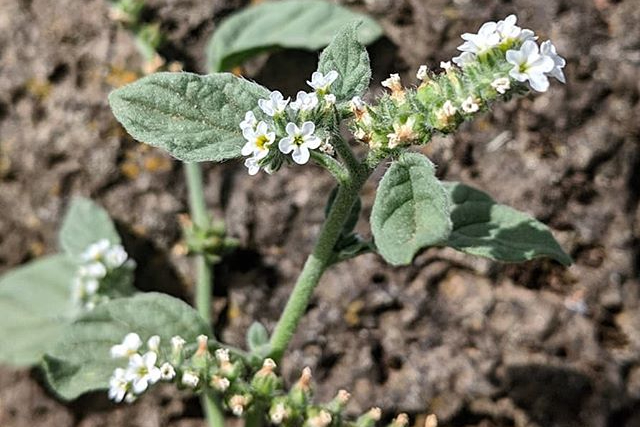Summer season is here and so are the challenges of managing weeds in our lawns, gardens, and pastures. While some weeds may seem harmless, there are several types that can be toxic and pose a threat to both humans and livestock. It is crucial to be able to identify these dangerous plants and understand the potential risks they present. In this comprehensive guide, we will explore the most common toxic summer weeds, their identification characteristics, and the steps to effectively manage and mitigate their harmful effects.
Understanding the Risks of Toxic Summer Weeds
The Importance of Weed Identification
Proper identification of toxic summer weeds is the first step in protecting ourselves and our animals. While some plants may cause mild skin irritations, others can lead to severe allergic reactions, liver damage, or even death. It is essential to be aware of the risks associated with these plants and take appropriate measures to avoid contact.
Factors Influencing Toxicity
The level of toxicity in summer weeds can vary depending on several factors. Environmental conditions, growth stages of the plants, and soil types can all influence the concentration of toxins within these weeds. It is important to note that some plants may only be toxic in certain situations or when consumed in large quantities. Understanding these factors can help us make informed decisions when managing our lawns and pastures.
Identifying Common Toxic Summer Weeds
Heliotrope (Potato Weed)
Heliotrope, also known as potato weed, is a common toxic summer weed that can cause significant harm to livestock. While it is generally unpalatable, hungry animals may consume it, leading to long-term health issues. Heliotrope contains alkaloids that can cause liver damage and jaundice in animals. Recognizing its distinctive fern-like leaves and understanding its impact on livestock is crucial for effective weed management.
Lesser Loosestrife
Lesser Loosestrife is another toxic plant that can cause liver and kidney damage in livestock. This upright plant with tiny pink flowers may appear similar to rosemary and can grow up to 40 centimeters in height. While it is unpalatable to animals, its consumption can lead to significant losses in sheep. Identifying Lesser Loosestrife and ensuring access to clean water is essential for preventing the detrimental effects it can have on livestock.
Crumbweed (Clammy Goosefoot)
Crumbweed, also known as clammy goosefoot, poses a cyanide poisoning risk to sheep, particularly in wet years. This toxic weed can cause sudden death, scouring, and other symptoms. Recognizing the plant’s characteristics and understanding its impact on livestock can help prevent losses and ensure the well-being of our animals.
Paddy Melons
Paddy melons are generally unpalatable to livestock due to their smell. However, under certain conditions, animals may consume them when feed is scarce. Paddy melons can lead to significant losses, and their consumption should be avoided. Being able to identify paddy melons and understanding the circumstances under which animals may be tempted to eat them is crucial for effective weed management.
Managing Toxic Summer Weeds
Preventive Measures
Prevention is key when it comes to managing toxic summer weeds. Implementing good pasture management practices, such as maintaining adequate grazing rotation and providing sufficient, high-quality feed, can help reduce the chances of livestock consuming these harmful plants. Regular monitoring of pastures and early intervention can also prevent weed populations from spreading.
Integrated Weed Management
Integrated weed management strategies combine various methods to effectively control toxic summer weeds. These methods include cultural, mechanical, chemical, and biological approaches. By adopting a holistic approach and utilizing a combination of these methods, we can minimize the presence of toxic weeds and protect the health of our lawns and livestock.
Chemical Control
In some cases, chemical control may be necessary to manage toxic summer weeds effectively. Selective herbicides can be used to target specific weed species while minimizing harm to desirable plants. It is crucial to follow label instructions, use appropriate protective gear, and consider environmental factors when using herbicides for weed control.
Pasture Renovation
In severe cases where toxic summer weeds have taken over pastures, pasture renovation may be necessary. This process involves rejuvenating the soil, reseeding with desirable forage species, and implementing proper management practices to prevent weed reinfestation. Consulting with agronomists or extension services can provide valuable guidance on pasture renovation techniques.
Managing toxic summer weeds requires vigilance, knowledge, and proactive measures. By familiarizing ourselves with the identification characteristics of these plants, understanding the risks they pose to ourselves and our animals, and implementing effective weed management strategies, we can create safer environments for both our lawns and livestock. Remember, prevention is the key to minimizing the impact of toxic summer weeds, so stay informed and take action to protect your surroundings.
Green & Grow Provides Lawn Fertilization & Weed Control
Green & Grow’s Fertilization and Weed Control programs provide a lush, healthy, green lawn. Our lawn fertilization program supplements the soils and feeds the plants. We take weed control very seriously and provide a wide range of treatments to tackle all the common weeds of Central Kentucky. We use only the finest fertilizers to achieve the best results for your lawn.
> Learn More
Contact us (859-314-LAWN) for more information or a free instant quote!
—
 About Green & Grow
About Green & Grow
Green & Grow is a full service lawn care company specializing in lawn mowing, fertilization & weed control, aeration & seeding, insect control, and more!
> Learn More





 About Green & Grow
About Green & Grow